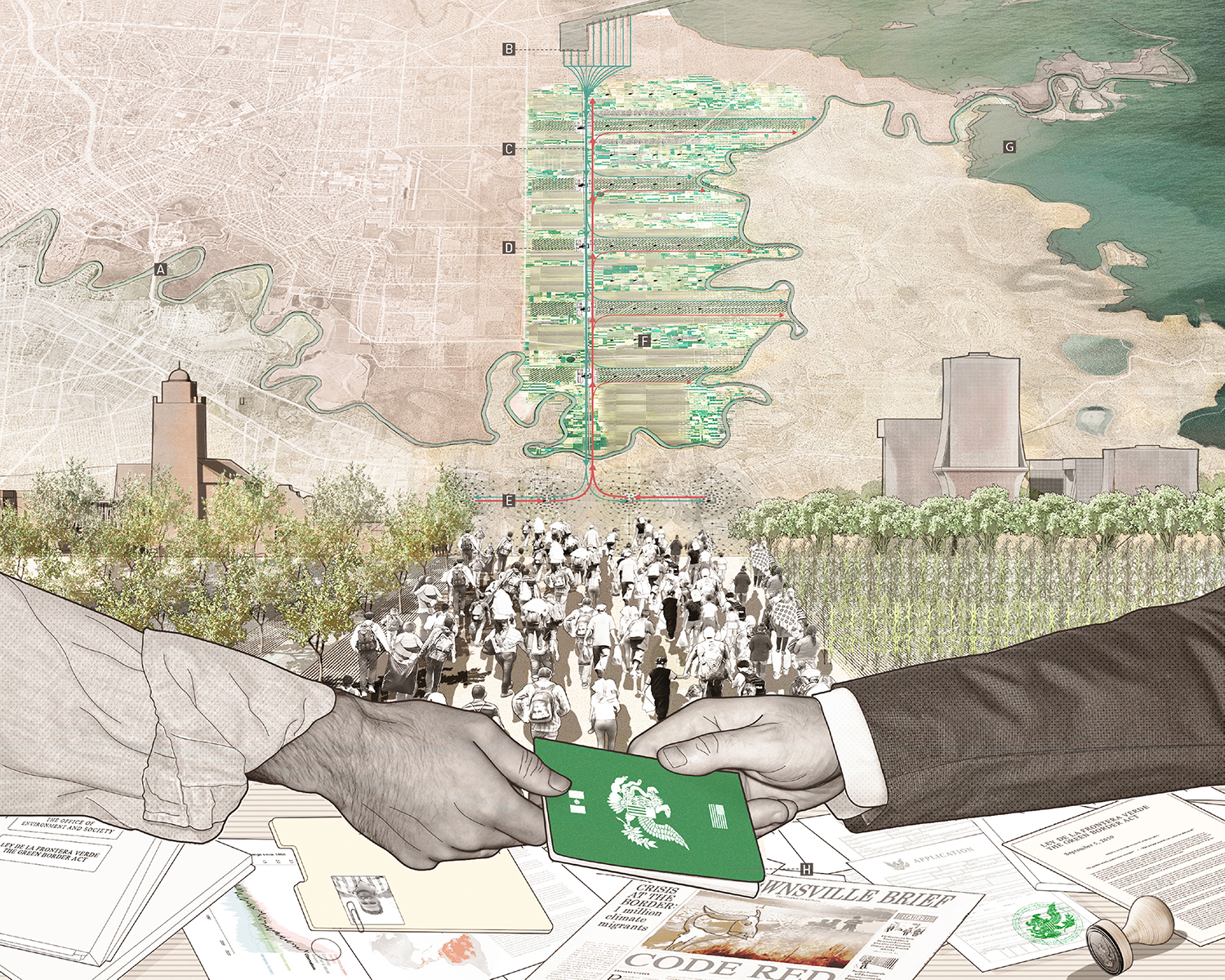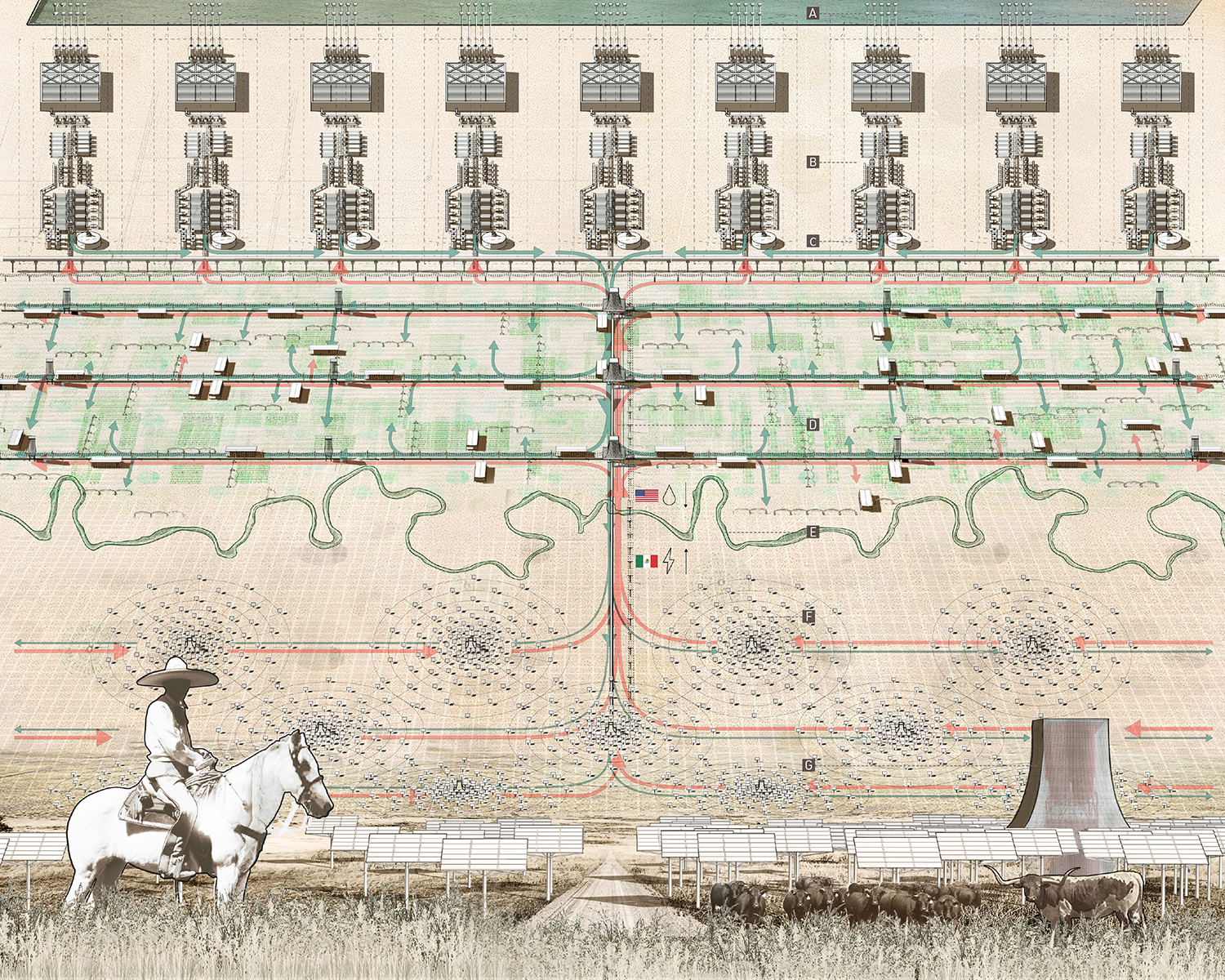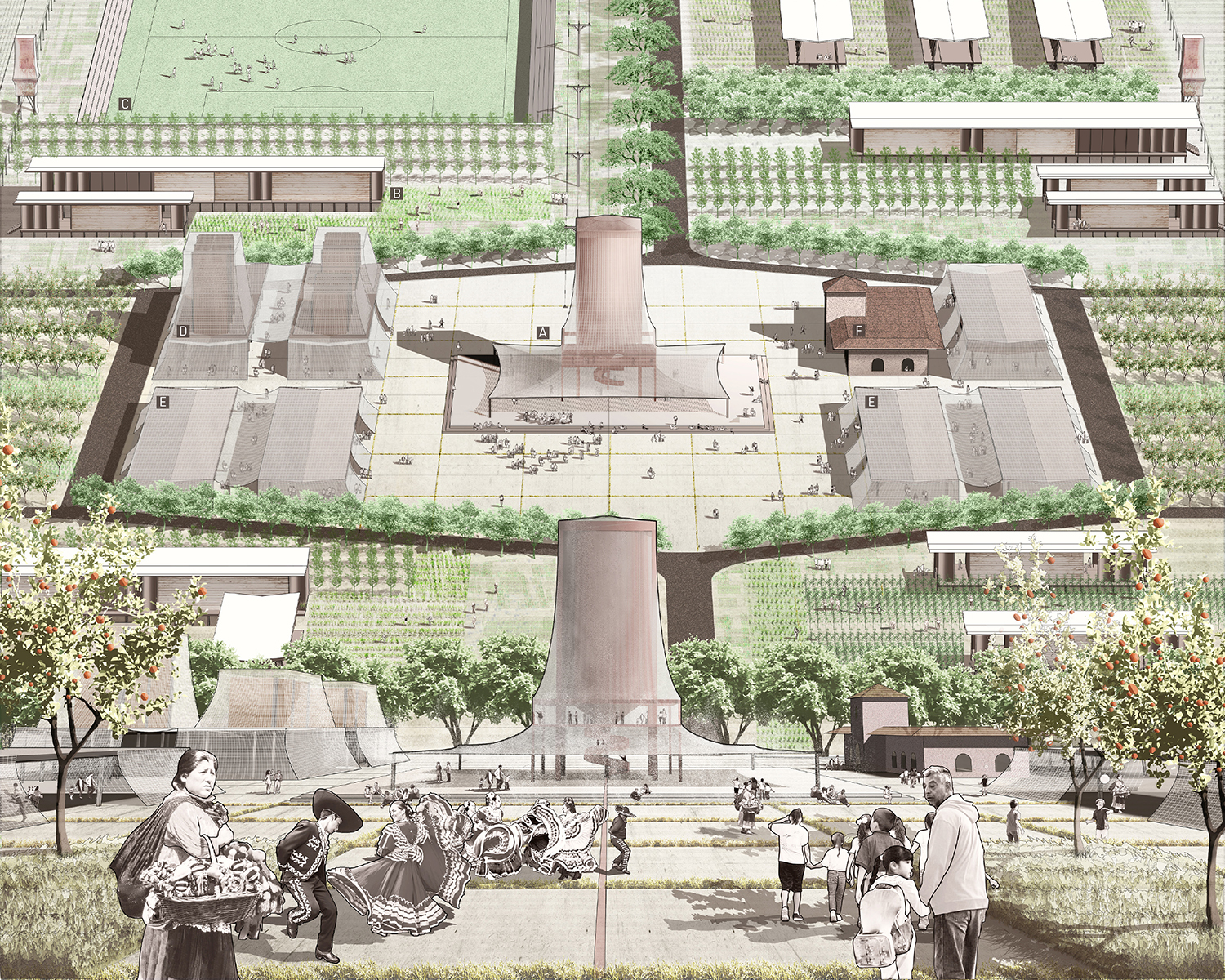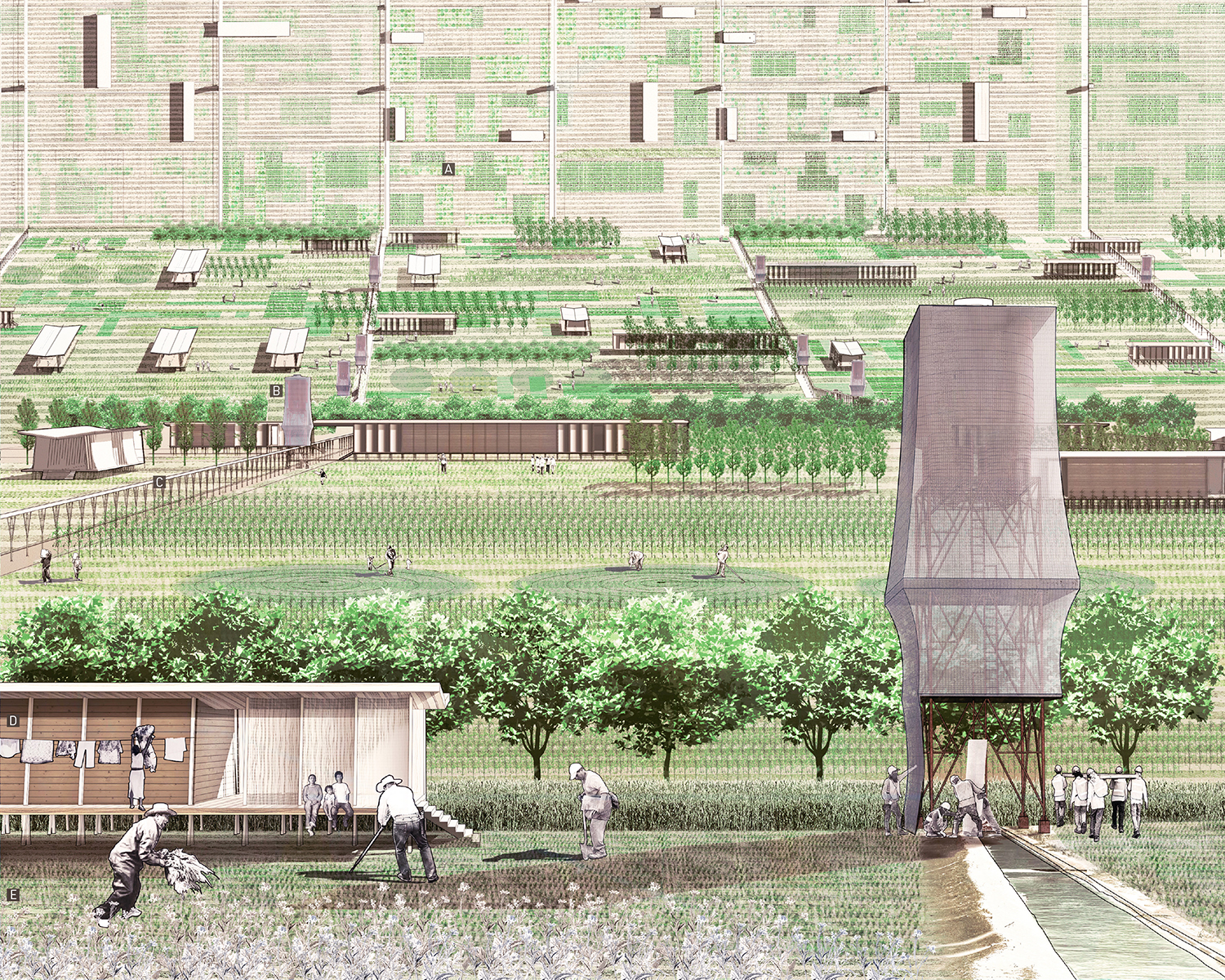
Competition entry for 2021 Warming Competition
Honorable Mention in "React" category
Project partners: Makio Yamamoto and Sebastian Bernal
The border between the United States and Mexico will destabilize with the tremendous influx of refugees. Within the next 25-50 years, the number of Latin American refugees traveling to the United States could increase from the hundreds of thousands to millions. Most of these asylum seekers are sustenance farmers who are stripped of the opportunity to cultivate crops due to sudden storms and droughts.
Demonstrating extreme ecological, political, and cultural tensions are the twin border cities of Brownsville, Texas and Matamoros, Mexico, currently transepts for immigrants, climate refugees, and asylum seekers. These sister cities are separated by the Rio Grande River. Thousands of people hoping to cross the border wait in ill-planned, densely packed migrant camps with scant resources, while thousands more are dispelled back.
Meanwhile, rising sea-levels from the Gulf of Mexico in the east and major droughts directly threaten the coastal prairie ecosystem and vital cropland of the region.
As a practical and ethical necessity, both countries must cooperatively respond and avoid a humanitarian crisis. The border must be understood as a fluid ecosystem, rather than a rigid political axis dividing North and South America.
The dire sitaution at the border requires a radical re-imagining. The Green Border Act proposes a “Special Ecological Zone” (SEZ) at the border designated for the housing of climate refugees and the rehabilitation of farmland. In this proposal, housing is intermixed with farm plots that are granted to incoming refugees to allow them to settle the area and to apply their expertise as farmers. The fields are irrigated through desalination plants on the American side of the border that draw and treat saltwater from the port of Brownsville. After treatment, freshwater is distributed through a series of pipes and water towers. The plants are powered by arrays of solar energy on the Mexican side of the border, which dictate the logistical capacity of the desalination infrastructure.
The SEZ expands according to the rate of cooperation between the US and Mexico, playing off the needs of both countries amidst a climate crisis. Splitting the necessary infrastructure to maintain and expand the SEZ between the US and Mexico incentivizes the US to alter its attitude to climate immigration by outsourcing the power grid required to maintain the irrigation efforts in Brownsville. Additionally, Mexico is provided with hitherto unrealized political and infrastructural agency along the border. A new economy of reciprocity is established to blur the rigid lines between countries and to create new communities that bring the Americas closer together. The Green Border Act seeks to write a Pan-American identity whose borders act as living ecosystems that will stitch us together in the face of global climate change.







